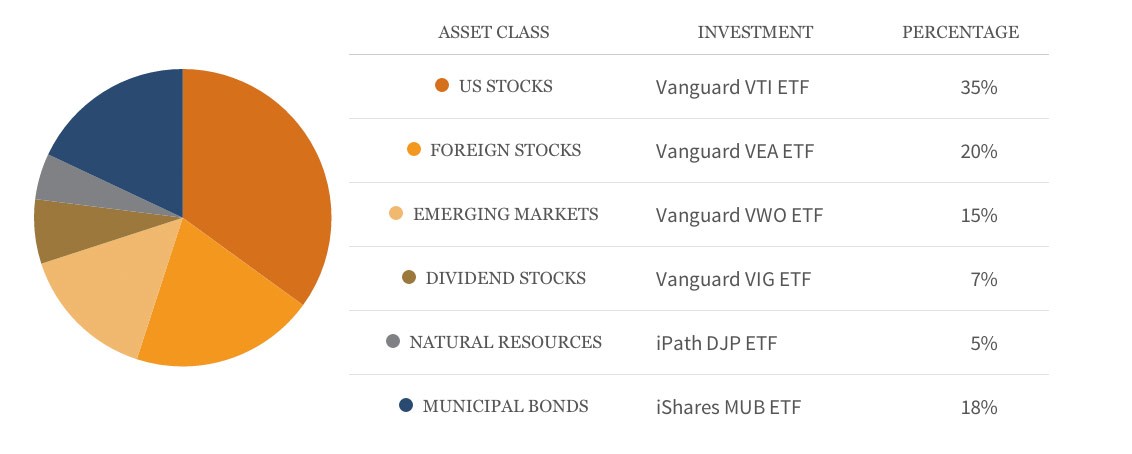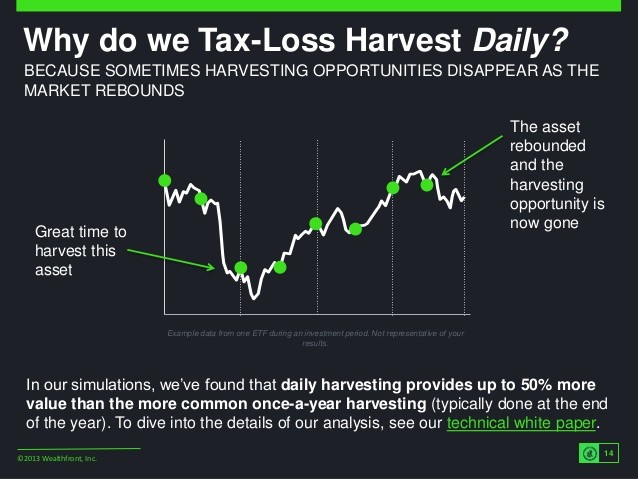Tax Loss Harvesting with ETFs
Post on: 17 Август, 2015 No Comment

Your e-mail has been sent.
The end of the year is right around the corner, and that means it’s a good time to think about potentially saving more of your money by managing your tax bill. Most people know that ETFs can be a powerful investing tool. However, ETFs can also be an effective tax management tool.
Tax-loss harvesting involves selling securities that have decreased in value in order to offset realized gains from other investments. It may be possible to use ETFs in a tax-loss harvesting strategy.
Tax-efficient tips
The IRS allows you to offset realized capital gains with realized capital losses. Suppose, for example, that you have a portfolio consisting of just two investments, Stock X and Stock Y. Stock X has increased by $2,000, while Stock Y has decreased by $2,000. If you were to sell both stocks by year-end, you would not have to pay any taxes on the $2,000 capital gain on Stock X because of the loss on Stock Y. 1
Any excess losses you have after you have offset all realized capital gains can offset ordinary income, up to $3,000 annually. Losses not used in one tax year can be carried forward indefinitely to future tax years.
ETFs and taxes
For the basics on ETFs and how you might use them in your portfolio. visit the Exchange-Traded Funds section on Fidelity.com for more information.
Generally, ETFs are considered tax efficient relative to some mutual funds. That’s because most broad-based ETFs do not typically make capital gains distributions—which are subject to taxation when held in a taxable account.
That helps make ETFs particularly useful for tax-loss harvesting—the tax strategy of selling securities that have declined in value, in order to offset capital gains from other securities.
Beware the wash sale rule
What if you want to take advantage of tax-loss harvesting, but do not want to sell positions that have incurred losses?
You could sell a security, purely for tax purposes, and then repurchase it shortly thereafter. The problem here is if you sell a security at a loss and then buy the same or a substantially identical security (in the same or different account) in the 61-day period beginning 30 days before the sale and ending 30 days after the sale. The loss is disallowed for tax purposes under the IRS wash sale rule and is effectively deferred until the new shares are sold.
Keep in mind that tax-loss harvesting is possible only in taxable accounts; it does not work in tax-advantaged accounts (such as an IRA or HSA).
Tax-loss harvesting with ETFs

Consult a professional
If you’d like to tax loss harvest, consider consulting a tax advisor regarding the application of wash sale rules.
One way to manage your tax bill and continue to execute your strategy is to employ ETFs in order to avoid wash sales. Essentially, ETFs (and mutual funds) may be used to replicate a position that you are selling for the purpose of harvesting a tax loss.
Consider a hypothetical situation in which you purchased five different securities in January of this year. Four have increased in value by $1,000 each, and you plan to sell the positions to realize the gains. One of the five is a technology stock that, over the course of the year, has lost $2,000 in value. Despite this poor performance, you still think technology stocks are attractive and could rally in the future.
To take advantage of the underperforming stock while still maintaining exposure to tech stocks, you could sell the stock (to offset $2,000 of the $4,000 gain realized from selling the other four stocks) and purchase a technology ETF, such as the Fidelity MSCI Information Technology Index ETF ( FTEC ).
Here, you would not be subject to the wash sale rule, assuming the IRS does not view it as a “substantially identical” security, even though it serves the purpose of replacing the technology stock by providing exposure to the technology industry.
Of course, this ETF provides much broader exposure to technology stocks than the individual security that you sold. If that tech stock was in the semiconductor industry, for instance, and you still wanted that particular industry exposure, you could purchase a more targeted ETF—like the iShares PHLX Semiconductor ETF ( SOXX ).
Use ETFs to your advantage
The ETF universe is quite large, offering 1,400 different ETFs/ETPs, with total assets exceeding $1 trillion. Consequently, there is a strong probability of finding an investment to replace the position you might sell, in order to harvest a tax loss to reduce your tax bill.














